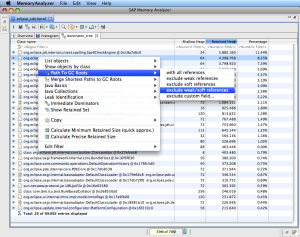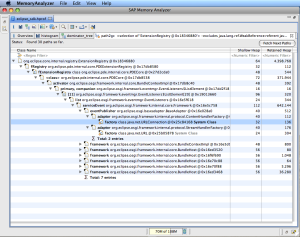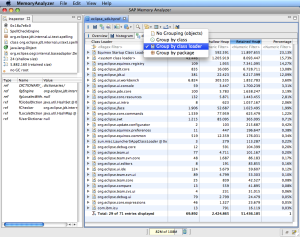Screenshots
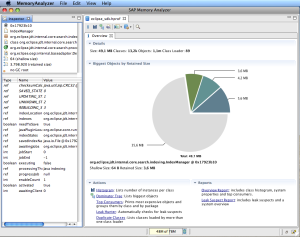
|
OverviewGet an overview of the heap dump: Size and total number of objects at the top, then a pie chart with the biggest objects and links to continue the analysis. |
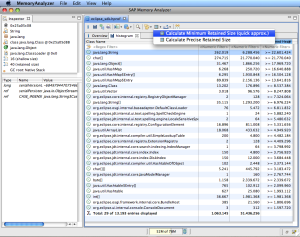
|
HistogramThe histogram lists the objects grouped by their class. The Memory Analyzer can approximate the retained size very quickly. This is a good indicator where to continue with the analysis. |

